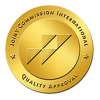Eye Surgery encompasses various medical procedures performed on the eye or its surrounding structures by specialist doctors called ophthalmologists. These surgical interventions aim to address a wide array of issues, including treating eye diseases that impair sight, correcting focusing problems like nearsightedness or farsightedness to reduce reliance on glasses or repairing the eye following an injury. It's a broad field focused on keeping or restoring visual health and function through precise surgical techniques adapted to specific eye conditions.

What Conditions Can Eye Surgery Treat?
Eye surgery addresses many different issues. Common examples include cataracts, where the eye's natural lens becomes cloudy and glaucoma, which involves optic nerve damage often related to eye pressure. Other conditions treated are retinal problems like detachment or diabetic damage, eye injuries, misaligned eyes (strabismus) and focusing issues such as nearsightedness, farsightedness and astigmatism. The specific surgery performed depends entirely on the diagnosed condition.
Who Performs Eye Surgery?
These specialized procedures are performed by ophthalmologists. These are medical doctors who have completed extensive training specifically in eye care. Their skill covers diagnosing eye conditions, providing medical treatments, performing surgical procedures and managing optical care. They are sometimes referred to as Eye M.D.s. Professional groups help ensure high standards for their training and patient care.
Does Every Eye Problem Require Eye Surgery?
No, definitely not. Many eye conditions can be managed effectively without surgery. For example, optic neuritis, an inflammation of the optic nerve, is typically treated with medications like steroids. Papilledema, a swelling related to pressure inside the head, needs treating the underlying cause, which might involve medication or other types of surgery, but not direct eye surgery. Even issues like fluid buildup causing high eye pressure might firstly be managed by addressing the drainage problem non-surgically. Surgery is usually considered after a thorough evaluation and when other choices aren't sufficient.
What is Refractive Eye Surgery?
Refractive eye surgery aims to correct common vision problems caused by how your eye focuses light. If light doesn't focus carefully on the retina at the back of your eye, your vision will be blurry. This includes nearsightedness (trouble seeing far away), farsightedness (trouble seeing close up) and astigmatism (blurriness at all distances). The main goal is to reduce or even cut your need for glasses or contact lenses, giving you clearer vision on your own.
How Does Laser Eye Surgery Correct Vision?
Most types of laser vision correction collaborate by precisely reshaping the cornea, which is the clear front surface of your eye. Since the cornea does a lot of the eye's focusing collaborate, slightly changing its shape can redirect light rays to land perfectly on the retina. Procedures like LASIK, PRK and SMILE use sophisticated lasers, often guided by detailed maps of your eye, to remove microscopic amounts of tissue and achieve the wanted shape change for clear vision.
What Happens During LASIK Eye Surgery?
LASIK is a very common procedure. First, your eye is numbed with drops. Then, a thin, hinged flap is created on the surface of the cornea, usually with a precise laser called a femtosecond laser. This flap is gently lifted, exposing the tissue underneath. An excimer laser then reshapes this underlying corneal tissue based on your specific vision correction needs. This laser part often takes less than a minute. Finally, the flap is carefully put back into place, where it adheres naturally without needing stitches.
Is LASIK Eye Surgery Painful?
The procedure itself is generally not painful because powerful numbing drops are used. You might feel some pressure on your eye when a device is used to hold it steady and your vision might dim temporarily during that part. After the numbing wears off, it's common to feel some mild discomfort for the first few hours, often described as a scratchy or gritty sensation, like having an eyelash in your eye. This usually resolves quickly and significant pain is uncommon.
How Successful is LASIK Eye Surgery?
LASIK is considered very successful. Patient satisfaction is typically very high, often over 95%. Most people achieve good vision without correction, usually 20/40 or better and many reach 20/20. People are generally very happy with the reduced dependence on glasses or contact lenses. Keep in mind, though, that "perfect" vision isn't guaranteed and some might still need glasses for specific tasks, like reading, especially as they get older. Vision can also change slightly over time.
What Are Common Side Effects After LASIK Eye Surgery?
It's quite common to experience some side effects, especially in the first few weeks or months, but they usually get better. Dry eyes are very frequent firstly, as the nerves involved in tear production are temporarily affected by the flap creation. You might also notice temporary visual effects like glare, halos around lights or starbursts, particularly at night. Some light sensitivity is also common. Using lubricating eye drops helps manage dry eye while things heal.
Are There Serious Risks with LASIK Eye Surgery?
While LASIK is safe for most eligible candidates, serious complications are rare. Potential issues, although uncommon, can include problems with the corneal flap (like shifting or folds), infection or significant inflammation. A very rare but serious complication is corneal ectasia, where the cornea weakens and bulges over time, affecting vision. Careful pre-operative screening helps find people who might be at higher risk for such issues, ensuring the procedure is as safe as possible. Significant vision loss is extremely rare.
How Do Doctors Decide if You're Suited for LASIK Eye Surgery?
A detailed eye examination is essential to decide if LASIK is a safe and suitable choice for you. Factors considered include being an adult (usually at least 18-21) with a stable glasses or contact lens prescription for at least a year. Your specific level of nearsightedness, farsightedness or astigmatism must be within the treatable range. Your corneas need to be thick enough and have a healthy shape. Your overall eye health must be good, without conditions like severe dry eye or uncontrolled glaucoma. Your general health also plays a role. Having realistic expectations is important too.
What is the Recovery Period Like After LASIK Eye Surgery?
Initial recovery is usually fast. Vision often improves dramatically within the first day. You'll use prescribed eye drops and need to wear protective shields, especially when sleeping, to avoid rubbing your eyes. It's crucial to avoid getting water in the eyes, swimming and strenuous activities for a period recommended by your surgeon. While many return to collaborate quickly, vision can fluctuate a bit for the first few weeks. Dryness and some glare/halos might persist temporarily but usually improve over 3 to 6 months as the eyes fully heal and stabilize.
Are There Alternatives if LASIK Eye Surgery Isn't Right for Me?
Yes, if LASIK isn't the best fit, other laser procedures are available. PRK (Photorefractive Keratectomy) reshapes the cornea without creating a flap; recovery takes a bit longer but it's a good choice for some, especially those with thinner corneas. SMILE (Small Incision Lenticule Extraction) is another less invasive laser technique that avoids a large flap, potentially reducing dry eye. Your ophthalmologist can discuss which procedure might be most suitable based on your individual eye characteristics.
What About Lens Implants as an Alternative Eye Surgery?
Lens-based surgeries are another alternative. ICLs (Implantable Collamer Lenses) are tiny, soft lenses placed inside the eye in front of the natural lens to correct vision, often used for higher prescriptions or when laser surgery isn't suitable. RLE (Refractive Lens Exchange) is essentially the same as cataract surgery but performed on a clear lens primarily to correct vision; it replaces the natural lens with an artificial one, which can correct nearsightedness, farsightedness, astigmatism and even presbyopia (age-related reading difficulty).
What are Non-Surgical Options Instead of Refractive Eye Surgery?
The most common non-surgical ways to correct vision are eyeglasses and contact lenses. Eyeglasses use lenses in a frame to bend light correctly. Contact lenses sit directly on the eye's surface. Both are effective and safe when used carefully but need ongoing use and care. Another choice is Orthokeratology (Ortho-K), where special rigid contacts worn overnight temporarily reshape the cornea for clear daytime vision without lenses, though the effect wears off if you stop wearing them.
What is Cataract Eye Surgery?
Cataract surgery addresses a condition called a cataract, which is when the natural lens inside your eye becomes cloudy. Normally, this lens is clear and helps focus light. When it clouds up, light gets scattered or blocked, leading to blurry or dim vision, problems with glare (especially from headlights), faded colors or even double vision. This surgery removes the cloudy natural lens and replaces it with a clear artificial lens to restore clear sight.
How is the Cloudy Lens Removed in Cataract Eye Surgery?
The most common method used today is called phacoemulsification. The surgeon makes very small openings in the eye. A tiny probe is inserted that uses high-frequency ultrasound waves to gently break the cloudy lens into small fragments within its surrounding capsule. These fragments are then suctioned out of the eye. This technique allows for removal through very small incisions, which promotes faster healing and quicker visual recovery compared to older methods.
What Replaces the Natural Lens in Cataract Eye Surgery?
After the cloudy natural lens is removed, a clear, artificial lens called an Intraocular Lens (or IOL) is put in its place. Modern IOLs are usually made of flexible materials like acrylic or silicone, allowing them to be folded and inserted through the same small incisions used to remove the cataract. The IOL unfolds inside the eye, settling into the natural lens capsule, where it stays permanently to provide clear focus.
Are There Different Types of Lenses Used in Cataract Eye Surgery?
Yes, there's a variety of IOLs available. The standard choice is a monofocal IOL, which provides clear vision at one distance (usually far away), meaning you'll likely still need reading glasses. Toric IOLs are designed to correct astigmatism at the same time. Presbyopia-correcting IOLs aim to reduce the need for glasses for multiple distances; these include multifocal IOLs (providing focus points for near, intermediate and distance) and Extended Depth of Focus (EDOF) IOLs (providing a smoother range of vision). The best choice depends on your individual vision needs and lifestyle.












